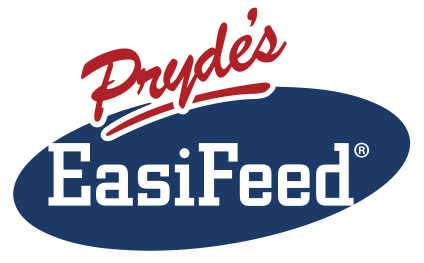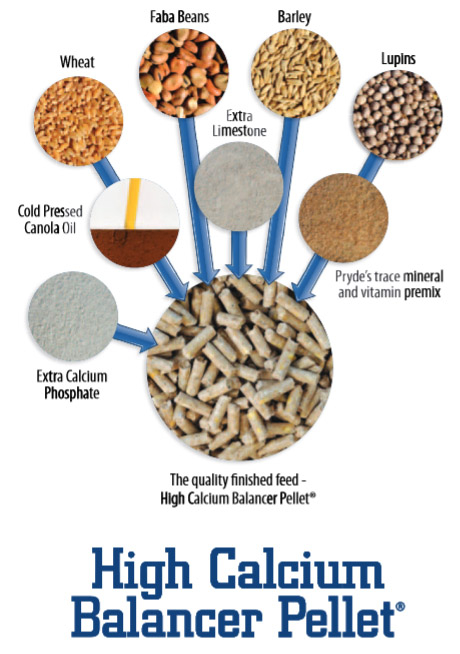For anyone driving around the country at the moment it is evident that we have just had a wet summer, with green pasture in abundance. Pasture is a wonderful resource for thoroughbred breeders, providing energy, protein, vitamins, minerals and the all important fibre for broodmares and growing horses alike. Access to pasture also means the need to provide hay and ‘hard feed’ is reduced, taking pressure off feed bills. However pasture brings with it its own set of issues that need to be carefully managed to prevent structural issues in young stock and obesity issues in mares.
Too much of a good thing
High quality pasture contains a lot of energy (calories). It is also palatable and if there is plenty of it, mares and young horses can easily eat enough to exceed their true daily energy requirement. For the mares, this means gaining weight and having issues with obesity. For young horses it means growing too quickly and potentially causing developmental orthopaedic diseases including OCD that are associated with rapid growth.
Hard feeds should be cut back
It is not easy to control a horse’s pasture intake and while you can use strategies like strip grazing to control calorie intake, the first thing that should be done in a situation where mares are getting too fat or weanlings and yearlings are growing too fast on high quality pasture is reduce the grain based ‘hard feeds’ being fed. This will help to reduce their overall energy intake and hopefully slow weight gains.
Pasture won’t meet mineral requirements
It is well known that a majority of Australian pastures don’t contain enough copper, zinc, selenium or iodine to support a broodmare or growing horse’s requirements. In many situations calcium and phosphorus are also below optimum levels and very occasionally manganese will be deficient. Under ‘normal’ pasture conditions, the hard feeds used in a diet (provided they are good quality feeds) fill these mineral ‘holes’ left by the pasture so that together the pasture and feed provide a diet that meets all requirements.
However, in a good season when the amount of hard feed is reduced or even removed from the diet to help control weight gain, horses are suddenly reliant on pasture to meet their nutrient needs and this WILL leave mineral deficiencies in the diet.
Use a balancer pellet
The simplest way to correct the mineral deficiencies that will be present in pasture based diets is to use a mineral balancer pellet. Balancer pellets are designed to fill the mineral holes left by pastures without adding excess energy to diets that would contribute to weight or growth rate problems. Balancer pellets will have a feeding rate of between 500 g to 1 kg/day and provided they are well formulated and fed according to the manufacturer’s directions will cover both a mares and growing horse’s needs for extra calcium, phosphorus, copper, zinc, selenium and iodine as well as a range of other minerals and vitamins.
Test your pasture
While we know most pastures will be deficient in the minerals discussed above, pastures, depending on where and how they are grown, often have their own unique issues that can cause problems with the sound growth and development of weanlings and yearlings. These issues can include:
- More phosphorus than calcium – it is increasingly common to see more phosphorus in a pasture than calcium. When this is the case the phosphorus blocks the absorption of calcium and creates a calcium deficiency.
- Too much zinc, not enough copper – this is not as common but some pastures can contain more than 5 parts zinc for every 3 parts copper and in these situations the zinc blocks the absorption of copper, creating a copper deficiency.
- Too much potassium – Some pasture have extreme levels of potassium (>50 g/kg DM). Horses on some farms are consuming in excess of 1000% of their daily requirement for potassium. While we don’t have published scientific evidence in equines, data in humans, rats and ruminants show that high potassium diets disrupt the absorption and metabolism of magnesium and calcium, two of the most important minerals involved in bone development. Circumstantial evidence suggests this is also the case for horses.
These problems with pasture are especially evident in a good season when horses are eating diets that are almost solely pasture. Talk to your feed supplier or equine nutritionist about testing your pasture so that they can then tailor a feeding program based around your pasture analysis results.
Beware of the sub-tropical grasses
Sub-tropical pastures that are common found in coastal and hinterland areas including kikuyu and buffel grass come with their own unique problem ... they bind calcium with a compound called oxalate in such a way that it is not available for absorption by the horse. Horses grazing on these pastures become calcium deficient and are at risk of a disease known as nutritional secondary hyperparathyroidism, commonly called Bighead. In ‘normal’ seasons when horses graze these pastures in conjunction with hard feed and hay the amount of pasture and oxalate consumed is too small to cause problems. However, when pasture quality is high and horses are eating a diet that is almost exclusively pasture, a calcium deficiency can occur in some horses very quickly even if a balancer pellet is provided.
Horses grazing these pastures MUST be supplied with enough calcium to keep the calcium to oxalate ratio of the diet above 0.5 parts calcium to 1 part oxalate. To achieve this, use a balancer pellet that has been designed specifically for horses grazing high oxalate pasture or have your nutritionist design a ration with extra calcium.
Pasture... use it wisely
Pasture is a brilliant resource but it needs to be used wisely. Pasture is able to meet many of the nutrient needs of mares and young stock, but nearly every pasture will have mineral deficiencies or imbalances that are easiest corrected through the use of a pasture balancer pellet. The real key to feeding correctly when pasture is abundant is to have your pastures tested so that you know exactly what is too high or low in your pastures allowing you to feed accordingly.
Pryde’s EasiFeed Pasture Balancer Pellets
Pryde’s EasiFeed have a range of pasture balancer pellets to help you feed horses according to the season. The Pryde’s 150 Balancer Pellet is a 15% protein pellet that is ideal for mares and growing horses grazing lush pastures. The 150 Balancer pellet is heavily fortified with minerals allowing you to feed just 600 grams per day to meet the mineral needs of pregnant mares, weanlings and yearlings.
The Pryde’s EasiFeed High Calcium Balancer Pellet with 50 g/kg of calcium has been developed specifically for mares, weanlings and yearlings grazing sub-tropical grasses to reduce the risk of calcium deficiency and Bighead disease that can develop on these pastures.
Pryde’s EasiFeed also provide a free pasture analysis service to their clients so that feeding programs can be tailored to your specific pasture.
For detailed assistance with your mare and growing horses diets and a pasture analysis service, please contact Pryde’s Pty Ltd on 1300 732 267, email info@prydes.com.au or go to Feed Selector



